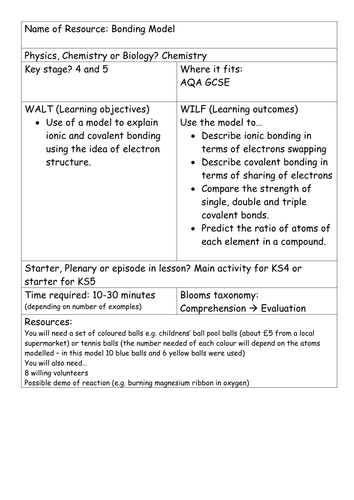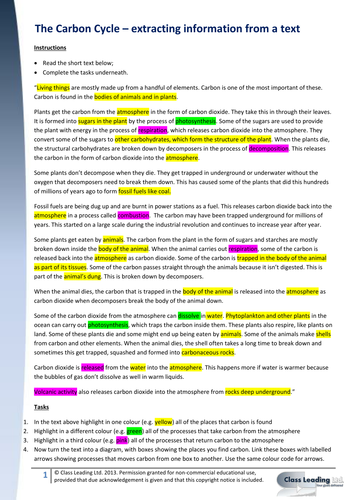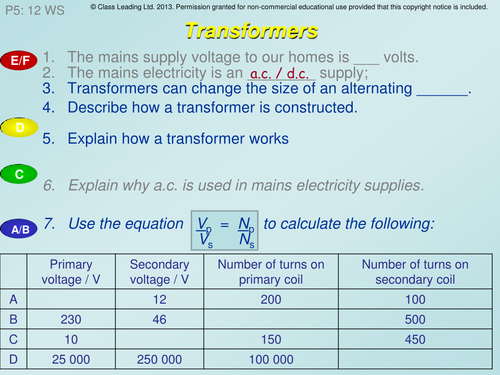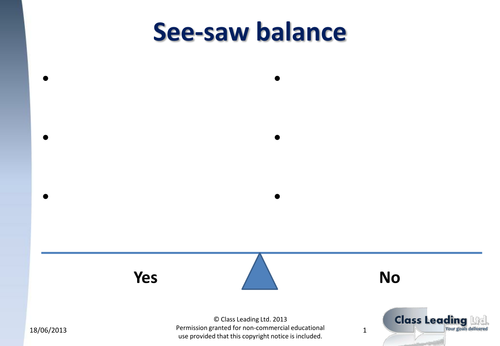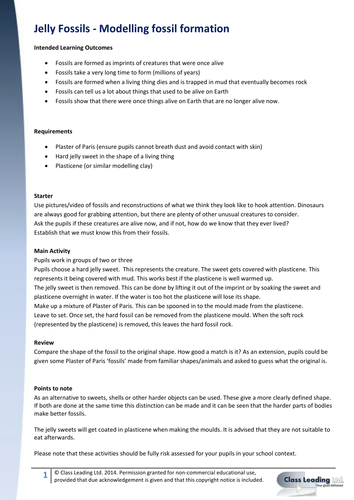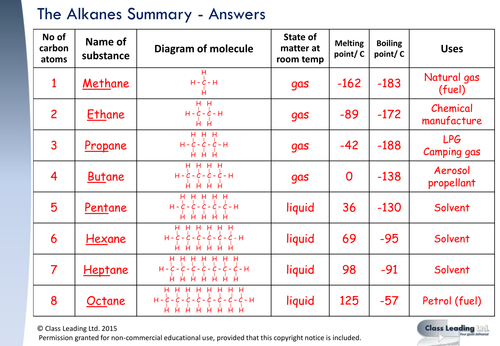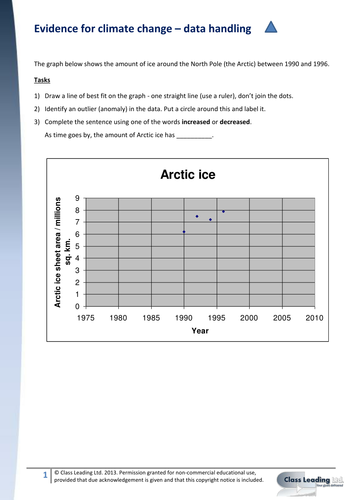312Uploads
254k+Views
192k+Downloads
All resources

Engaging model of ionic and covalent bonding
Keywords: bonding, model, electrons, ionic, covalent.
Notes: This engaging activity makes use of very affordable and easily available ball pool balls to support whole class teaching and group work. It models what happens to the electrons during ionic and covalent bonding.
Please note that this was originally published a number of years ago as part of the North Yorkshire Success for All project of which I was part and had the pleasure of working with an excellent team of teachers on resource development.
Right click the web links to download the powerpoint shows.

C4 Electron structure & ionic bonding revision
Keywords: structure, bonding, electron, energy levels, shells, orbitals, rings, periodic table, patterns.
Notes: This is a revision summary sheet that has questions about structure and bonding relating to electron arrangements and ion formation.
Please note that this resource was originally designed for unit C4 of OCR 21st Century Science, but is applicable to other specifications.
An answer sheet has now been addedl.

Greenhouse Effect & Solar System - data handling
This activity follows on well from the Greenhouse effect starter. Based on interpreting data about planets in the solar system, it leads learners to the conclusion that Venus is hotter than it should be due to CO2. There are two levels of activity, the more demanding one explores the role of photons/light/radiation in heating planets. This activity was originally designed for 21st Century Science unit P2.
Please note that this is a non-editable resource. A premium editable version is also available at: https://www.tes.com/teaching-resource/resource-11858634
Key words: greenhouse effect, atmosphere, CO2, carbon dioxide, global warming

Phases of the moon
In this activity, pupils are at the centre of model that shows how the Moon orbits the Earth and how this leads to the phases of the moon appearing. A description of how to do this is shown. A worksheet for recording the appearance of the moon model is included, with answers.
There are also links to a NASA video showing the phases of the moon, the first 30 seconds of which could be used to hook learners. A second video showing the experiment is also linked.
Please ensure that you have carried out a full risk assessment before carrying out any practical activity.

Work & change of energy - graded questions
This activity contains a powerpoint with graded questions & answers and matching pupil activity sheets, designed to be used at the end of a lesson and/or the start of the next lesson to review previous learning. The questions are based on the previous OCR 21st Century Science Specification unit P4, although could be used with other exam boards.\nClicking through the show reveals answers one a time. These reduce to A5 easily, the ideal size for most pupils. Please note grades are approximate.

Particles - Standard Model Flashcards
These flashcards, when printed out back-to-back and then cut out will produce a series of double sided flashcards showing the composition of particles in the standard model. They are good as an independent learning tool or revision activity. They could be used in preparation for the 'Identify the particle rolling slideshow Instant Engagement / Retrieval - available on TES Resources at:
https://www.tes.com/teaching-resource/resource-6341196

The Carbon Cycle - Extracting info from a text
Keywords: Carbon cycle, photosynthesis, respiration, decomposition, combustion.
An activity sheet and guidance sheet (with answers highlighted) in which students extract information from a text and then use this to identify the processes in the carbon cycle and ultimately construct a diagram from these. These can then be compared to one published in a textbook to allow students to make corrections. This works exceptionally well as a peer assessed activity.

Eating a sandwich - modeling digestion
There are two parts to this activity, one is a practical activity to model the process of digestion. The other is a powerpoint slideshow to show what happens to the food on its journey through the body. If using with KS3 then the learning outcomes on the activity plan could also include breaking up of molecules in digestion. If using with KS2 for the new curriculum, the powerpoint will include some terms/slides that you may wish to miss out, so it has been left in an editable form.\nPlease ensure that you carry out a risk assessment before carrying out a practical activity.

Food chains and energy transfer - questions
This is a worksheet based activity that includes some higher order thinking to explore the ideas around energy transfer in simple food chains. Two versions are included, one with legacy GCSE grades, the other without. (please note that grade indications are only approximate). Why not try getting learners to choose a selection of questions to answer (e.g. do Q1-4 or Q3-8) An answer sheet is included.
This resource was originally designed for OCR 21st Century Science unit B3.
A premium editable version of this is available at: https://www.tes.com/teaching-resource/-11858631
Keywords: energy, transfer, food chain, efficiency

Transformers - graded questions
This activity contains a powerpoint with graded questions & answers and matching pupil activity sheets, designed to be used at the end of a lesson and/or the start of the next lesson to review previous learning. The questions are based on the previous OCR 21st Century Science Specification unit P5, although could be used with other exam boards.\nClicking through the show reveals answers one a time. These reduce to A5 easily, the ideal size for most pupils. Please note grades are approximate.

Identify the particle rolling slideshow PP - Instant Engagement / Retrieval
These are a sequence of PowerPoint slideshows designed to support the retrieval of the composition of particles in the standard model. They can be used as an instant engagement task (rolling on screen as students enter the room for immediate engagement with learning). They can also be used as a retrieval quiz. The slideshows are essentially the same task (with rearranged slides) but get progressively more demanding as the changeover of slide gets faster (as the numbers on the titles of the slideshows in brackets increase). Start the students with (1) and then as they get faster, use the more demanding versions.
This resource goes well with the particle flashcards also available on TES Resources at https://www.tes.com/teaching-resource/-6341199

The carbon cycle - grade questions
This activity contains a powerpoint with graded questions & answers and matching pupil activity sheets, designed to be used at the end of a lesson and/or the start of the next lesson to review previous learning. The questions are based on the previous OCR 21st Century Science Specification unit P2, although could be used with other exam boards.\nClicking through the show reveals answers one a time. These reduce to A5 easily, the ideal size for most pupils. Please note grades are approximate.

Everyday levers
In this activity pupils can look at the images of levers and think about where the find them and what they do. Either images or real objects (or a combination) can be used with the two sheets, which are differentiated in terms of the number of expected responses and the questions used. Please note that clock (a 'distance multiplier&') is different to the other levers shown (&';force multipliers') and spotting the odd one out and providing a reason gives an extension for more able pupils. Please ensure that you have carried out a full risk assessment before carrying out any practical activity.

The Wave Equation - graded questions
This activity contains a powerpoint with graded questions & answers and matching pupil activity sheets, designed to be used at the end of a lesson and/or the start of the next lesson to review previous learning. The questions are based on OCR 21st Century Science Specification, although could be used with other exam boards.\nClicking through the show reveals answers one a time. There are two slightly different activity sheets for differentiation - one has key words, the other without. These reduce to A5 easily, the ideal size for most pupils. Please note grades are approximate.

Weighing up arguments - See saw writing frame
This resource is a collection of 6 slightly different see-saw balances that can be used with learners to help them develop the skills to weigh up an argument. The idea is that students will list reasons on both side of an argument (e.g. Should we have Nuclear Power?). They then use this to help make a decision. The scoring column on some sheets allows learners to score each argument out of a maximum of say 3. Add the scores on each side to see which has the stronger argument. This also includes phrases to support a more detailed conclusion. This was inspired by 21st Century Science.

Car efficiency - Data handling
Keywords: Efficiency, calculation, graph, skill, explain, justify, MAT.
This activity is designed to stretch the most able learners with some questions and tasks related to calculating efficiency. There are some demanding questions involving handling data and using graphs to make predictions. This was designed as a home learning task to consolidate learning about efficiency.
It would also make a suitable starter for AS/A level.
An answer sheet is included with suggested marks for each question.

Jelly fossils - Modelling
In this activity, pupils go through the process of making a fossil of a jelly sweet to show how fossilisation takes place. A description of how to do this is included in the guide. Please ensure that you have carried out a full risk assessment before carrying out any practical activity.

Seismic Waves - graded questions
This activity contains a powerpoint with graded questions & answers and matching pupil activity sheets, designed to be used at the end of a lesson and/or the start of the next lesson to review previous learning. The questions are based on OCR 21st Century Science Specification, although could be used with other exam boards.\nClicking through the show reveals answers one a time. There are two slightly different activity sheets for differentiation - one has key words, the other without. These reduce to A5 easily, the ideal size for most pupils. Please note grades are approximate.

The Alkanes Summary (flipped learning)
This is a collection of separate pdf documents that help learners summarise information about the alkanes.
Each of the different sheets allows for a different level of support and challenge
- Sheet A is totally blank.
- Sheets B and C have fewer sections to fill in.
- Sheet D has all of the molecules drawn.
- Sheets E involves some reading for information and only has a limited amount of information and could be good for the least able.
- Sheet F, many of the answers can be deduced (at least approximately) and can be good for stretching the most able.
It is intended that the activity be carried out as 'flipped learning' so that learners complete this activity before learning about the alkanes and/or fractional distillation.

Evidence for climate change - data handling
This is a short standalone activity, good for developing higher order thinking skills and providing an opportunity for cognitive conflict and discussion. Firstly either allow the students to work through the first two set of tasks sequentially. Alternatively, one half of class can be given first sheet,marked with a triangle, the other half being given the ones marked with a square to be worked on independently. After a few mins pair up with third sheet. Students respond well to even quite tricky questions.

